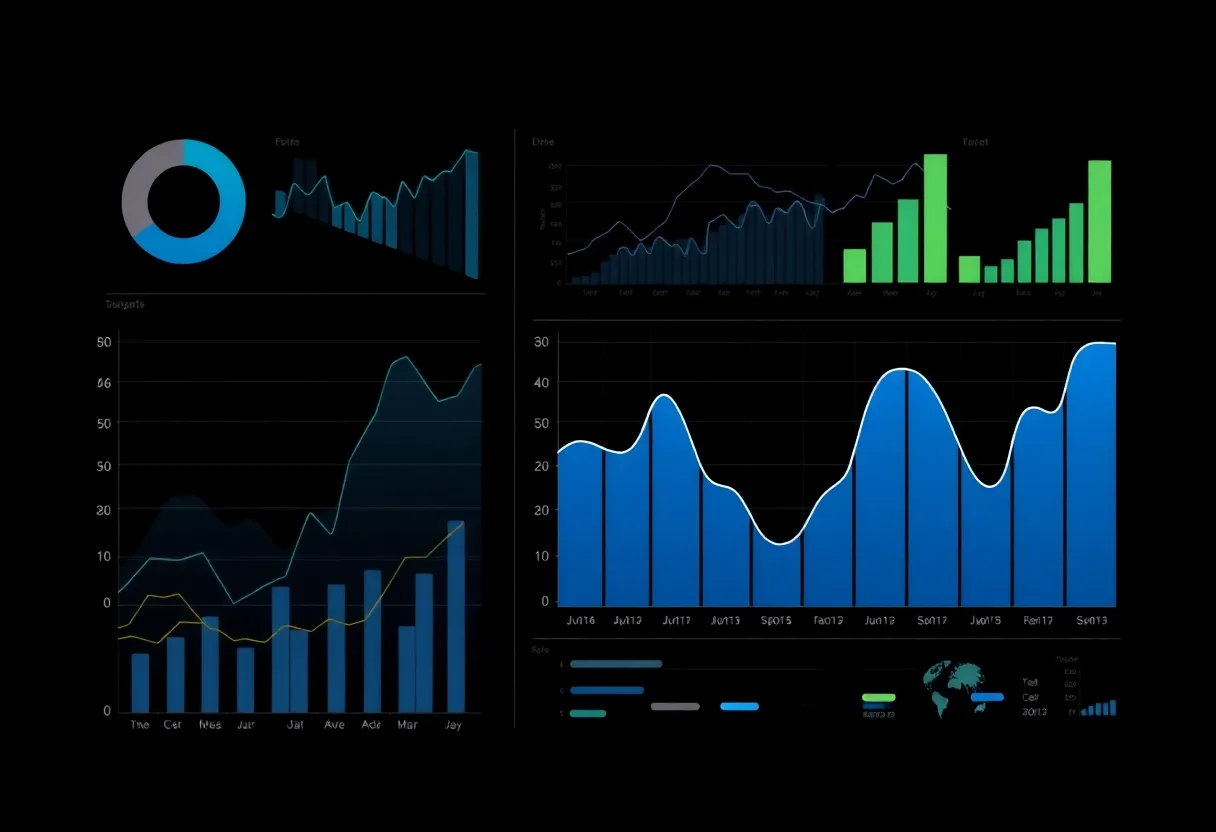

Graphs and charts depicting digital data analysis trends.
Article Sponsored by:
Real Internet Sales is a digital marketing agency located in Columbia, South Carolina. We specialize in website design and development, SEO, social media management, online advertising, AI integration, and workflow automation. Our services also include affiliate marketing and digital strategy.
Real Internet Sales also offer specialized programming for real estate firms, using IDX and RETS feeds to automatically populate MLS properties on their websites for improved property listings and sales. We also work with clients in the restaurant, tourism, and e-commerce industries to enhance their digital presence and streamline operations.
In the contemporary digital landscape, web analytics has emerged as a cornerstone for businesses aiming to optimize their digital marketing strategies. With the ability to track user behavior, gather data, and derive actionable insights, web analytics enables organizations to make informed decisions that drive results. This article delves into how you can leverage web analytics to transform your digital marketing efforts effectively.
Web analytics refers to the collection, measurement, and analysis of web data. It provides insights into how users interact with your website and digital assets. By understanding visitor behavior, businesses can make data-driven decisions that enhance user experience and improve marketing effectiveness.
Data serves as the backbone of digital marketing strategies. The insights drawn from web analytics can revolutionize your approach. Whether it’s understanding audience demographics, measuring campaign effectiveness, or assessing user engagement, data informs every aspect of your marketing efforts.
To harness the power of web analytics, knowledge of essential metrics is imperative. Understanding which indicators to focus on can greatly influence your marketing strategy.
Identifying where your traffic comes from – organic search, social media, email campaigns, or paid ads – is fundamental. It allows you to optimize and allocate resources to the most effective channels. For instance, if organic search is driving significant traffic, enhancing SEO practices should be a priority.
Metrics such as page views, bounce rate, and average session duration provide insight into user engagement. A high bounce rate may indicate that visitors are not finding relevant content, signaling a need for content optimization.
Measuring the conversion rate of your site allows you to evaluate the effectiveness of your marketing campaigns. Low conversion rates can highlight issues in the funnel, prompting a reassessment of your calls-to-action and landing pages.
Now that we understand the core metrics, the next step involves integrating web analytics insights into your marketing strategy. Here are some effective approaches:
Utilize web analytics tools to segment your audience based on behavior, demographics, and interests. Tailoring content and marketing messages to different segments can significantly enhance engagement and conversion rates.
Analyzing which content performs best—based on metrics such as time spent on page and social shares—allows marketers to refine their content strategies. Prioritize high-performing topics and formats while identifying gaps where new content is needed.
A/B testing different variations of your web pages or ads allows for empirical evaluation of user preferences. Use analytics to track the performance of these tests and implement changes based on what resonates most with your audience.
Selecting suitable tools is essential for effective web analytics implementation. Various platforms provide robust analytical capabilities:
Google Analytics remains one of the most popular web analytics tools, providing insights into traffic, user behavior, and conversion tracking. It offers comprehensive reporting features that can seamlessly integrate with other Google services, creating a unified marketing approach.
Hotjar complements traditional analytics with heatmaps and user session recordings. These tools provide qualitative insights that help visualize user interactions on your site, offering a deeper understanding of user experience.
Adobe Analytics is a more advanced tool suited for larger enterprises. It enables in-depth analysis of user data, offering segmentation, real-time data processing, and predictive analytics functionalities.
Defining clear goals and Key Performance Indicators (KPIs) is crucial for measuring the impact of your web analytics initiatives. Consider the following:
Set specific, measurable, achievable, relevant, and time-bound (SMART) goals to guide your marketing efforts. For instance, increasing website traffic by 30% in six months provides a clear target to drive your strategies.
Regularly monitor KPIs such as the number of conversions, cost per acquisition, and return on investment (ROI) to assess the effectiveness of your marketing strategies. Adjust methodologies based on these insights for ongoing improvement.
To fully realize the benefits of web analytics, fostering a data-driven culture within your organization is essential. This approach encourages collaboration, innovation, and accountability.
Invest in training programs to equip your marketing team with analytical skills. Understanding how to interpret data and apply insights can dramatically improve decision-making across campaigns.
Create an environment that encourages experimentation based on data insights. Empower teams to test new ideas and strategies and use analytics to evaluate their effectiveness. This iterative approach can uncover new opportunities and optimize existing tactics.
While the benefits of web analytics are substantial, challenges can arise. Understanding these obstacles and implementing solutions is key to maximizing your digital marketing strategy.
With the rise of data privacy regulations, marketers must navigate compliance challenges. Ensure that your analytics practices align with laws such as GDPR and CCPA by prioritizing transparency in user data collection.
With the plethora of data available, determining what is most relevant can be overwhelming. Focus on key metrics that align with your goals to avoid analysis paralysis. Simplify reporting and prioritize actionable insights over raw data.
In an ever-evolving digital landscape, leveraging web analytics is essential to transforming your digital marketing strategy. By understanding user behavior, optimizing content, and making data-driven decisions, businesses can enhance engagement and achieve their marketing objectives.
Embracing a systematic approach to web analytics will empower organizations to stay competitive and relevant. The insights gleaned from user interactions can not only enhance short-term campaigns but also inform long-term strategies. As you continue to adapt and evolve in your marketing efforts, remember to utilize the data at your disposal as a powerful tool for transformation.

7001 St Andrews Rd #329 ,
Columbia, SC 29212,
United States
Phone: (+1) 803 708 5514
News Summary Jewish Family Service (JFS) is enhancing its services in Cape May County by…
News Summary The SEOST Digital Marketing Conference 2025, previously SEO Spring Training, promises a larger…
News Summary A recent study shows that 66.7% of Americans are adopting generative AI tools,…
News Summary As we enter 2025, social media is witnessing a critical shift towards authenticity…
News Summary Social commerce sales in the United States are projected to reach $80 billion…
News Summary Porsche AG is set to undergo significant executive changes starting in 2025. Matthias…